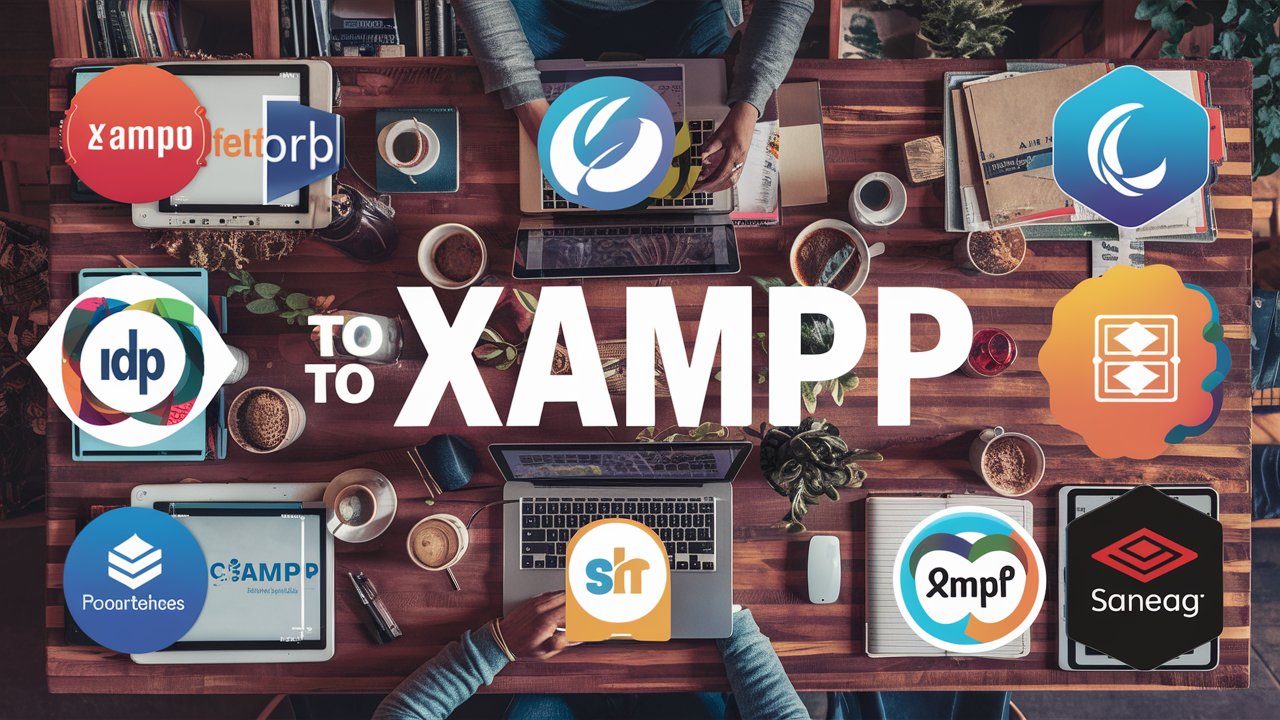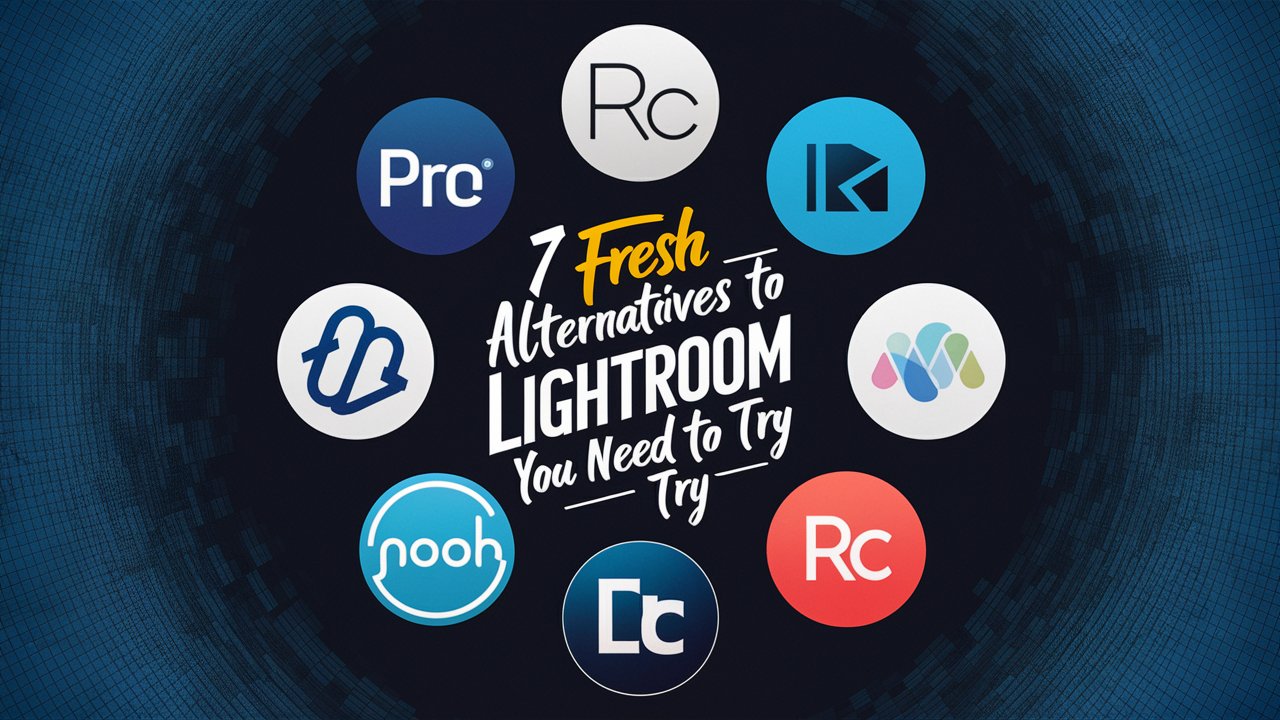In the ever-evolving realm of web development, the quest for innovation and efficiency is paramount. It’s time to break free from the confines of conventional tools like XAMPP and embark on a journey of exploration and discovery.
Welcome to a world where versatility reigns supreme, where alternatives await to revolutionize your web development experience. Embracing change can often lead to remarkable breakthroughs, making it imperative for developers to consider new possibilities that challenge the status quo.
As we delve into this transformative landscape, we invite you to shed preconceived notions and embrace the myriad alternatives that promise a fresh perspective on website creation. Today, we set forth on an empowering quest to equip you with the knowledge and confidence needed to venture beyond XAMPP’s familiar shores.
By nurturing an open-minded approach, we unlock a treasure trove of innovative solutions waiting just beyond the horizon. Let us embark together on this playful yet purposeful journey towards discovering practical resources that will revolutionize your web development toolkit.
Stay tuned as we compare the pros and cons of traditional methods against a backdrop rich with possibilities – because in exploring “Alternatives”, lies the key to unleashing your full potential in today’s dynamic digital landscape.
Understanding XAMPP.
XAMPP, an acronym for Cross-Platform (X), Apache (A), MySQL (M), PHP (P), and Perl (P), has long been a stalwart in the realm of website development. This all-in-one software package serves as a local server solution that allows developers to create and test dynamic web applications offline before deploying them live.
By installing XAMPP on their local computers, users can simulate a web server environment without the need for an internet connection, fostering a convenient and efficient developmental process.
However, despite its convenience, XAMPP is not immune to challenges and limitations. One common issue faced by users is the complexity of configuration settings, where novices may struggle with setting up the server correctly to run their projects smoothly.
Furthermore, as web technologies evolve, XAMPP might lag behind in terms of keeping up with the latest features and advancements demanded by modern web development practices. This lack of scalability could hinder developers from fully leveraging cutting-edge solutions for their projects and exploring new avenues for growth.
In light of these constraints, it becomes paramount for users who seek innovation and efficiency in web development to explore alternatives beyond XAMPP. Breaking away from the conventional approach opens doors to discovering more versatile tools tailored to meet diverse needs and preferences.
By embracing this shift towards exploring new possibilities, developers can elevate their skillsets, streamline workflows, and stay ahead in an ever-evolving digital landscape.
Alternative 1: WampServer – Liberating Web Development with User-Friendly Design.
When it comes to freeing oneself from the chains of conventional web development platforms like XAMPP, one cannot overlook the empowering allure of WampServer.
A beacon of innovation in the realm of server solutions, WampServer stands out as a robust alternative that prides itself on its user-friendly interface—perfect for those looking to break free from complex setups and configurations.
Imagine a world where setting up your local server environment is not a daunting task but an enjoyable experience, where every click brings you closer to unleashing your creativity. That’s the promise that WampServer delivers.
One of the key features that differentiate WampServer from its more traditional counterpart, XAMPP, is its emphasis on ease of configuration. Say goodbye to hours spent troubleshooting compatibility issues or navigating through intricate settings; with WampServer, simplicity reigns supreme.
For instance, imagine effortlessly switching between PHP versions or managing Apache modules within a few clicks—the power is now at your fingertips. This streamlined approach not only saves time but also boosts productivity, allowing developers to focus on what truly matters—building remarkable websites and applications without unnecessary constraints.
In the journey to find liberation from outdated methods, embracing alternatives like WampServer presents an open-minded opportunity for users to reconsider their web development workflows. By choosing a platform that values user experience and practicality above all else, developers can unlock their full potential and embark on projects with newfound confidence.
So why limit yourself to old norms when you can explore the refreshing landscape of innovative tools like WampServer? Break free from mediocrity and embrace this versatile alternative—it might just be the catalyst your development process has been yearning for.
Alternative 2: MAMP.
Enter MAMP, a beacon of light for macOS users navigating the realm of web development. Boasting a versatile set of tools, MAMP stands tall as a powerhouse alternative to XAMPP, catering specifically to those immersed in the Apple ecosystem.
Imagine a seamless experience where compatibility and performance converge effortlessly on your Apple devices – that’s precisely what MAMP offers. By understanding the unique needs of macOS users, MAMP carves out its territory as a trusted ally for developers seeking efficiency and reliability.
In the battle of alternatives, let’s shed light on why MAMP emerges victorious over XAMPP on Apple soil. Picture this: flawless compatibility with macOS architectures that eliminate frustrating roadblocks.
With MAMP’s optimized performance, watch your projects soar to new heights without being bogged down by compatibility issues. Transitioning from XAMPP to MAMP opens doors to a world where your creativity can flourish uninhibited, free from constraints commonly associated with traditional platforms like XAMPP.
Through the lens of empowerment and open-mindedness, envision the possibilities that await when you embrace MAMP as your go-to web development companion. The journey from conventional tools like XAMPP to the innovative realms of MAMP is not merely about finding alternatives; it’s about unlocking your true potential as a developer within the Apple ecosystem.
Let curiosity guide you towards exploring the vibrant capabilities offered by MAMP, propelling you towards a future where seamless web development on macOS is no longer just a dream but an exhilarating reality.
Discover the Efficient and Lightweight Laragon: An Alternative to Traditional Tools.
Are you ready to step into a realm of web development where efficiency meets versatility? Laragon stands tall as an alternative tailor-made for developers seeking lightweight yet feature-rich solutions.
Imagine a world where setting up your development environment is not just painless but actually pleasurable. That’s the promise that Laragon delivers, disrupting the conventional setup processes with its user-friendly approach and feature-packed toolkit.
Laragon simplifies the setup process in a way that eliminates the complexities often associated with traditional tools like XAMPP. Picture this: within minutes, you can have a fully functional local server environment up and running, ready to support your coding endeavors.
This streamlined process not only saves time but also reduces frustration, empowering developers to focus on what truly matters – their projects. Say goodbye to long installation procedures or compatibility issues; Laragon paves the way for a seamless development experience.
For those keen on exploring innovative alternatives without compromising on functionality, Laragon emerges as a game-changer. Its ability to provide a lightweight solution while incorporating essential features opens up new possibilities for developers looking to break free from cumbersome setups.
Whether you’re a seasoned developer tired of clunky interfaces or a newcomer eager to dive into web development without unnecessary hurdles, Laragon beckons with open arms, offering an empowering and enlightening journey through the world of efficient local servers.
Alternative 4: Docker.
Docker emerges as a transformative tool in the realm of web development, offering a cutting-edge alternative to conventional platforms like XAMPP. Unlike the monolithic setup of XAMPP, Docker employs a modular approach through containerization capabilities, enabling developers to encapsulate their applications along with all dependencies into portable containers.
This innovative method not only streamlines development workflows but also enhances deployment processes by ensuring consistency across various environments. Imagine the ease and efficiency of shipping your application in a self-contained unit that runs seamlessly from development to production environments, regardless of variations in system configurations.
Compared to the traditional setup complexities often associated with XAMPP, Docker provides a flexible and scalable solution for deploying applications across different operating systems and cloud services. Developers can easily manage multiple projects simultaneously without worrying about conflicting dependencies or versioning issues.
By isolating applications within containers, Docker fosters an environment where experimentation and innovation thrive, encouraging users to break free from the constraints imposed by conventional development tools like XAMPP. Embracing Docker’s technology opens up a world of possibilities where developers can build, test, and deploy applications with agility and confidence.
Through Docker’s containerization capabilities, developers unlock new avenues for collaboration and innovation in web development. Picture a scenario where teams seamlessly share development environments, speeding up project timelines and fostering cohesive work practices.
By adopting Docker as an alternative to XAMPP, developers not only embrace a modern approach towards software packaging and delivery but also empower themselves to explore novel solutions that transcend the limitations of traditional setups.
The shift towards utilizing Docker signifies not just a mere technological change but a mindset shift towards embracing the future of web development with openness and curiosity.
Alternative 5: EasyPHP – A Breath of Fresh Air for Beginner Developers.
EasyPHP emerges as a bright beacon in the realm of web development tools, offering a user-friendly alternative that caters specifically to beginners venturing into the world of programming. It prides itself on its straightforward setup process and intuitive interface, making it an ideal choice for those taking their first steps in building websites.
Compared to the sometimes daunting complexity of XAMPP, EasyPHP is like a friendly mentor guiding newcomers through the intricate landscape of coding with ease and accessibility.
In addressing usability concerns commonly faced by users of traditional platforms like XAMPP, EasyPHP shines by streamlining its features and functionalities to focus on simplicity without compromising on performance.
Imagine a tool that not only empowers you to create dynamic web applications but also does so in a way that feels natural and uncomplicated. With EasyPHP, tasks that might seem daunting for novices suddenly become manageable tasks that inspire confidence and curiosity in equal measure.
For developers making the transition from XAMPP to EasyPHP, the relief from unnecessary complexities can be palpable. By simplifying workflows and emphasizing user experience, EasyPHP proves that web development doesn’t have to be an intimidating maze of technical jargon; it can be an exciting journey filled with discovery and growth.
In choosing EasyPHP over conventional options like XAMPP, users open doors to new possibilities while solidifying fundamental programming skills in a supportive environment designed to nurture creativity and innovation.
Case Studies: Real Success Stories.
In the realm of web development, tales of transitions from XAMPP to more versatile alternatives abound. Take Sarah, a budding web developer frustrated by XAMPP’s cumbersome setup process and compatibility issues. Upon discovering EasyPHP, she found solace in its user-friendly interface and seamless configuration options.
The switch not only boosted her productivity but also instilled a renewed sense of passion for coding, as she effortlessly navigated through different projects without the previous hindrances.
Another inspiring narrative comes from Mark, an IT professional seeking streamlined deployment solutions. Struggling with the limitations of XAMPP in handling complex web applications, he embraced Docker’s containerization capabilities.
Through Docker’s modular approach, Mark revolutionized his workflow by isolating dependencies and ensuring consistent performance across various environments. This paradigm shift not only optimized his project outcomes but also elevated his reputation within the tech community as an innovative problem-solver.
Additionally, Lisa’s journey from XAMPP to Laragon showcases the transformative power of exploring new possibilities in web development tools. Initially overwhelmed by XAMPP’s feature-heavy interface, she hesitantly tried Laragon and was astounded by its lightweight yet robust features tailored for efficiency and speed.
With Laragon simplifying previously daunting tasks like local server setup and maintenance, Lisa harnessed newfound confidence in her coding abilities and was able to deliver projects faster than ever before.
These real success stories exemplify the tangible benefits of breaking free from traditional tools like XAMPP and venturing into the world of versatile alternatives.
By embracing change and adopting solutions that align better with individual needs and preferences, developers can unlock their full potential, streamline their workflows, and embark on a journey towards enhanced creativity and efficiency in web development practices.
Embrace Innovation: Elevate Your Web Development Journey.
As we conclude this exploration of versatile alternatives to XAMPP, it’s evident that the world of web development offers a myriad of innovative tools waiting to be discovered. By breaking free from the familiar confines of conventional platforms like XAMPP, you open the door to a realm of possibilities where your creativity can flourish.
From WampServer’s user-friendly interface to Docker’s cutting-edge containerization capabilities, each alternative presents a unique path toward enhancing your development workflow.
In this ever-evolving landscape, embracing new possibilities isn’t just about trying something different—it’s about empowering yourself with the knowledge and tools needed to stay at the forefront of web development.
So, dare to step out of your comfort zone, be open-minded towards diverse perspectives, and let your journey through these alternatives be an exciting and enlightening experience.
Remember, innovation thrives when we are willing to explore beyond what is familiar, so go forth with confidence and discover the boundless opportunities that await you in the world of web development.
I am commitment to crafting compelling narratives and delivering insightful content continues to inspire and inform readers across various platforms. Explore her articles on AlternativesZone.com and FactAfterFact.com to experience a rich tapestry of knowledge and discovery. Here I Analyze and Test the products and services together with my team before we recommend them to our users. Nice Reading Here!











